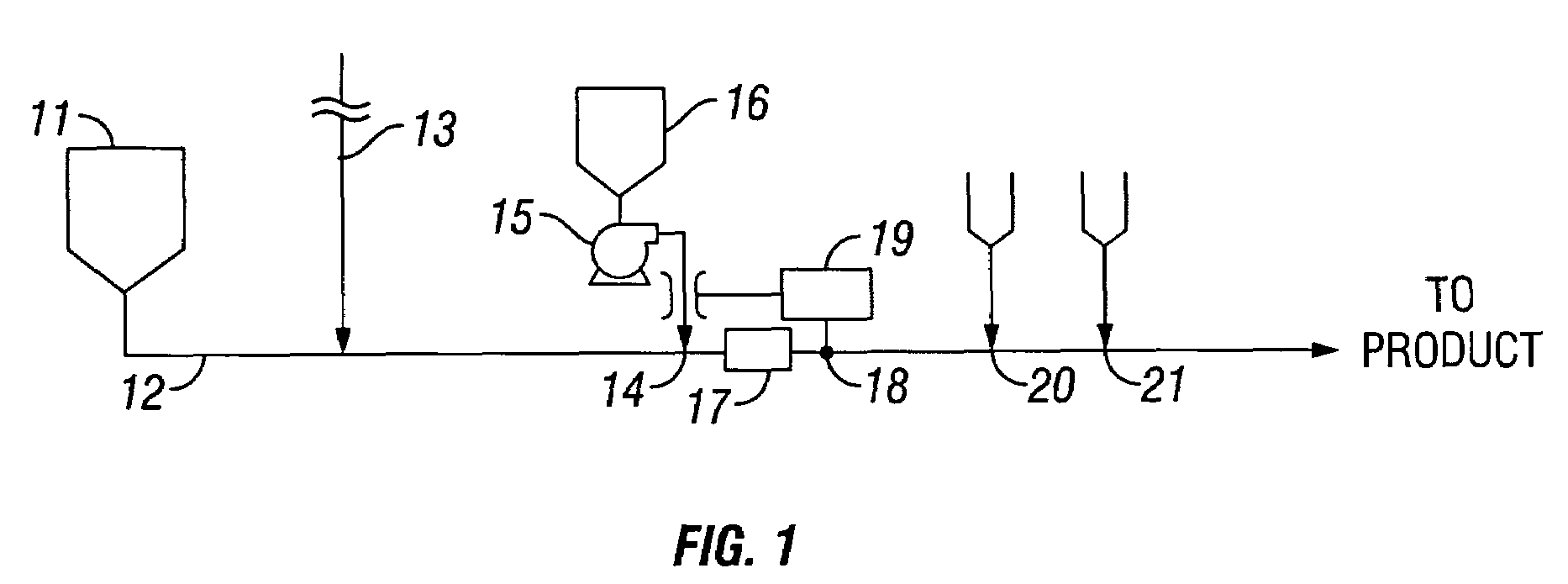Control of pH in formaldehyde-free binder systems
a formaldehyde-free binder and ph technology, applied in the direction of process and machine control, coatings, instruments, etc., can solve the problems of fiber accumulation on the forming chamber walls, formaldehyde resin, and inability to compare fiberglass binders with paper or wood products, etc., to achieve excellent physical characteristics and fewer processing difficulties
- Summary
- Abstract
- Description
- Claims
- Application Information
AI Technical Summary
Benefits of technology
Problems solved by technology
Method used
Image
Examples
Embodiment Construction
[0017]Binder composition useful in the formation are prepared by mixing a resin solution with water. The resins typically comprise low molecular-weight poly-carboxy polymers, especially acrylic polymers although other formaldehyde-free resin may also be used. As used herein, the term “formaldehyde-free” means that the resin or binder composition is substantially free of formaldehyde and / or does not liberate formaldehyde as a result of drying or curing. The pH of the mixture is adjusted to a pH of 3.5 or less and additional additives may be introduced. While the binder compositions can be formed in a batch process, it is preferable to form the composition in a continuous process. The invention relates to a method and system for continuously monitoring the pH of the binder composition as it is formed and adjusting the addition of pH control agent to ensure that the composition has a pH with a pre-set specification.
[0018]Referring to FIG. 1, a formaldehyde-free resin is introduced from...
PUM
| Property | Measurement | Unit |
|---|---|---|
| pH | aaaaa | aaaaa |
| pH | aaaaa | aaaaa |
| rigidity properties | aaaaa | aaaaa |
Abstract
Description
Claims
Application Information
 Login to View More
Login to View More - R&D
- Intellectual Property
- Life Sciences
- Materials
- Tech Scout
- Unparalleled Data Quality
- Higher Quality Content
- 60% Fewer Hallucinations
Browse by: Latest US Patents, China's latest patents, Technical Efficacy Thesaurus, Application Domain, Technology Topic, Popular Technical Reports.
© 2025 PatSnap. All rights reserved.Legal|Privacy policy|Modern Slavery Act Transparency Statement|Sitemap|About US| Contact US: help@patsnap.com

